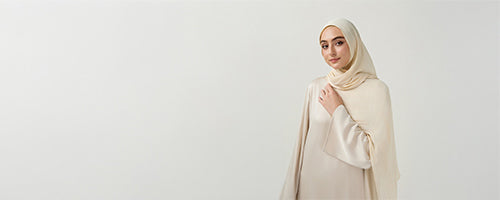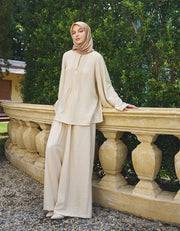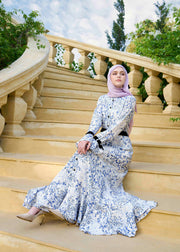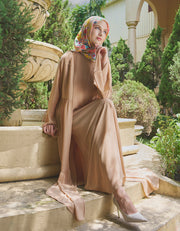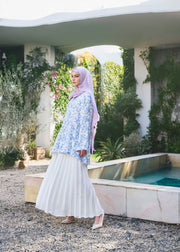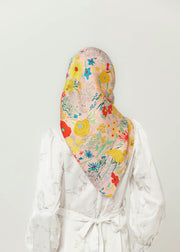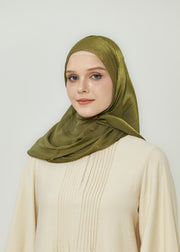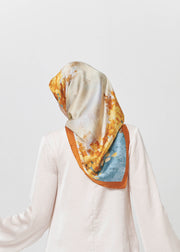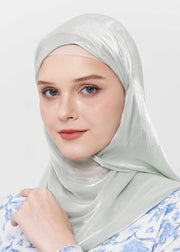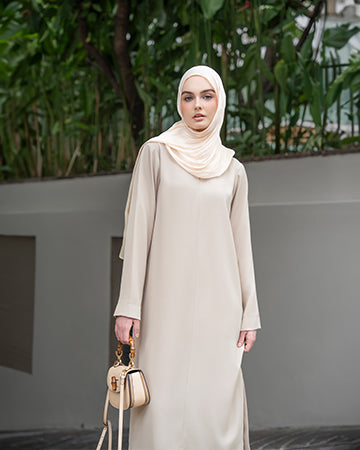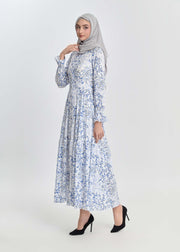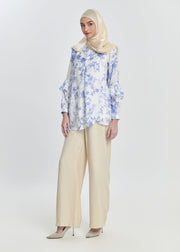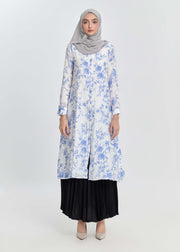The Role of Natural Fabrics in Islamic Modest Clothing
In Islamic modest fashion, the choice of fabric is just as important as the design. Natural fabrics in Islamic clothing, such as cotton, linen, and silk, offer comfort, breathability, and elegance. They allow Muslim women to maintain modesty without sacrificing style or practicality.
Unlike synthetic materials, natural fabrics are kinder to the skin and often more sustainable, aligning with values of responsibility and moderation. This makes them an ideal choice for modest wardrobes around the world.
Types of Natural Fabrics in Islamic Clothing
There are several types of natural fabrics commonly used in modest wear. Each carries its own benefits:
-
Cotton – Soft, breathable, and versatile for daily modest outfits
-
Linen – Lightweight and cooling, perfect for summer Islamic clothing.
-
Silk – Luxurious, elegant, and often chosen for abayas or hijabs on special occasions.
-
Wool – Warm and cozy, making it ideal for winter modest wear.
By understanding these options, Muslim women can select natural fabrics in Islamic clothing that suit their climate, lifestyle, and personal taste.

Types of Natural Fabrics in Islamic Clothing
Benefits of Natural Fabrics in Islamic Clothing
Choosing natural fabrics in Islamic clothing has many advantages:
-
Breathability – Allows airflow, keeping the body cool in hot climates.
-
Comfort – Gentle on the skin and suitable for all-day wear.
-
Sustainability – Eco-friendly and biodegradable compared to synthetics.
-
Durability – Many natural fabrics last longer with proper care.
-
Elegance – Fabrics like silk or fine cotton add sophistication to modest outfits.
These qualities make natural fabrics an essential part of Islamic modest fashion, balancing tradition with modern needs.

Benefits of Natural Fabrics in Islamic Clothing
How Natural Fabrics Support Modesty
Islamic clothing emphasizes modesty, and fabric choice plays a major role in achieving that. Natural fabrics in Islamic clothing allow for layering, flowing silhouettes, and appropriate coverage.
For example, cotton maxi dresses can be paired with lightweight cardigans, while silk abayas drape beautifully without being clingy. Linen tunics also create modest yet stylish looks. In all cases, natural fabrics enhance the graceful modesty that Islamic fashion celebrates.
Seasonal Use of Natural Fabrics in Islamic Clothing
One reason natural fabrics are so popular in modest fashion is their adaptability across seasons:
-
Summer – Linen and cotton provide cooling comfort.
-
Winter – Wool and heavier cotton blends keep the body warm.
-
Spring & Autumn – Silk or layered cotton offer balance between warmth and breathability.
This versatility ensures that natural fabrics in Islamic clothing remain relevant year-round, regardless of climate.
Styling Natural Fabrics in Islamic Clothing
Muslim women often style natural fabrics creatively to suit modest dressing guidelines. Here are some ideas:
-
Pair linen tunics with wide-leg pants for a breathable, casual outfit.
-
Use cotton maxi dresses with chiffon scarves for an elegant modest look.
-
Wear silk hijabs with abayas for special occasions.
-
Layer wool cardigans over long dresses in cooler weather.
These styling approaches prove that natural fabrics in Islamic clothing can be practical, stylish, and modest all at once.

Styling Natural Fabrics in Islamic Clothing
Caring for Natural Fabrics in Islamic Clothing
Proper care helps natural fabrics last longer:
-
Cotton & Linen – Wash in cold water and air dry to prevent shrinkage.
-
Silk – Hand wash gently or dry clean for best results.
-
Wool – Use mild detergents and avoid high heat drying.
Maintaining natural fabrics in Islamic clothing ensures that outfits remain elegant, durable, and sustainable over time.
Why Natural Fabrics in Islamic Clothing Are Timeless
The enduring appeal of natural fabrics comes from their harmony with modest values. They promote comfort, sustainability, and elegance while allowing Muslim women to express their faith through clothing. As trends evolve, natural fabrics continue to hold a special place in Islamic fashion because they connect tradition with modern needs.
Conclusion
Natural fabrics in Islamic clothing play a crucial role in creating modest, stylish, and practical wardrobes. From breathable cotton and linen to elegant silk and cozy wool, these fabrics ensure modest fashion remains both timeless and sustainable.
If you’re looking for beautifully designed outfits made with natural fabrics, discover the collections at Minnaba, where modest fashion meets modern elegance.

